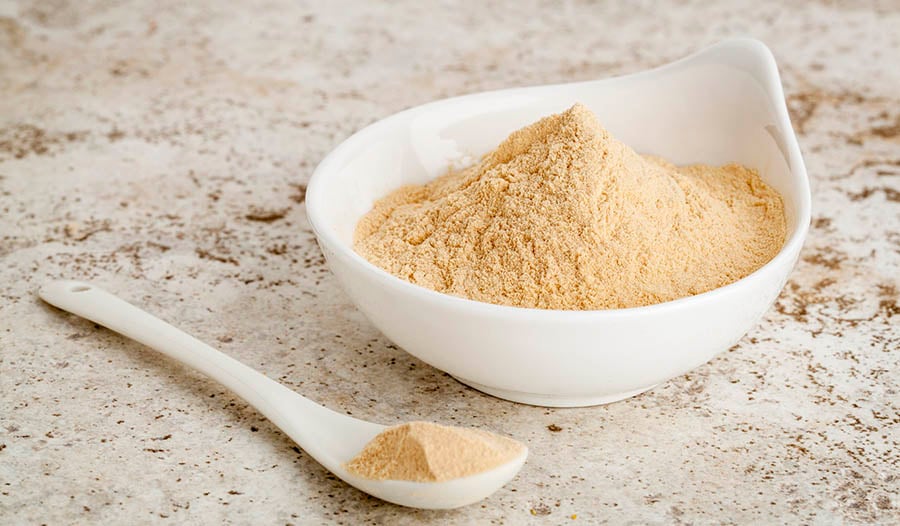Maca'nın İnanılmaz Özellikleri

Doğadaki şaşırtıcı olaylardan biri, bir bitkinin veya hayvanın çevreye adaptasyonudur. Bir bitkinin tıbbi etkileri ile ilgili olduğu için, aktif bileşiklerin bileşimi coğrafya, yükseklik, iklim ve diğer faktörlerden büyük ölçüde etkilenebilir. Bu stresörler genellikle bitki içinde hayatta kalmasına yardımcı olmak için koruyucu faktörlerin oluşumuna yol açacaktır. Çoğu zaman, bu bileşikler insan sağlığının iyileştirilmesinde de önemli etkiler gösterir.
Bitki içinde kimyasal bileşimin farklı ifadesine yol açan bu çevresel etkinin harika bir örneği Peru Maca(Lepidium meyenii) 'dir. Lahana ailesinin bu büyüleyici üyesi, şalgamın yakın bir akrabasıdır, ancak onu yaygın turpgillerden sebzelerle topaklamak, lahana ailesinin diğer üyelerinin kendi sağlığı iyileştirici eylemler listesine sahip olsa bile, sağlık yararlarına neredeyse bir kötülüktür. Mesele şu ki Maca özel ve onunla ilişkili saygıya layık.
A Maca Primer
Maca , yüksekliğin tipik olarak 11.000 ila 14.000 fit olduğu Peru ve Bolivya'nın kuzey Puna bölgesine özgüdür - ağaç çizgisinin hemen üzerinde, ancak kalıcı kar örtüsünün altında. Maca, dünyadaki en yüksek rakımlı gıda ürünüdür. Bununla birlikte, Puna bölgesi, yüksekliğinin ötesindeki mahsuller için çok zor bir ortamdır. Yılın herhangi bir zamanında, sıcaklıklar donma noktasının altından 60° F'ye kadar değişebilir. Bölge yağış açısından kuraklık yaşadığında bile, nem oldukça yüksek kalır. Sonuç olarak, büyüme mevsimi de dahil olmak üzere donlar sık görülür. İşte en önemli nokta, tüm bu çevresel stres faktörleri Peru Maca"nın benzersiz kimyasal bileşimiyle sonuçlanır.
Maca, yaklaşık altı inç boyunda ve genişliğinde büyüyen küçük bir bitkidir. Şalgal şeklindeki kökü hasatta kabaca 1 inç ila 3 inç çapında değişir. enerjiartırma yeteneği, dayanıklılığı ve doğurganlığı nedeniyle binlerce yıldır değer verilen bu kök budur. Puna halkı için hala değerli bir besindir.
Maca keskindir, bu güçlü, acı bir tadı tanımlamak için kibar bir kelimedir. Ama aynı zamanda bir tatlılığı da var. İlginç ve sıradışı bir lezzettir ve yetiştirme koşullarındaki değişikliklerden dolayı tadında bir farklılık vardır. Kimyasal bileşimleri ve uygulamaları bakımından da değişen farklı Maca formları da vardır. Kökler 3 temel renk grubunda büyür:
- Sarı Maca, Peru'da hasat edilen tüm Maca köklerinin yaklaşık% 60'ını oluşturur. Tüm Maca ürünleri arasında en yaygın kullanılan ve en çok araştırılan üründür. enerjiyiartırmak, konsantrasyonu artırmak ve hormonlarıdengelemek için çalışır.
- Kırmızı Maca, yıllık hasatın yaklaşık% 25'ini oluşturur ve tüm Maca tozları arasında en tatlı tadıdır. Çalışmalar, tüm Maca renkleri arasında en yüksek fitokimyasal seviyelere sahip olduğunu göstermiştir. hormon dengeleyici etkileri ve kemik sağlığı üzerindeki etkisi nedeniyle kadınlar için en etkili tip olarak kabul edilir.
- Siyah Maca tüm Maca renkleri arasında en nadir olanıdır ve yıllık hasatın yaklaşık %15'ini oluşturur. Araştırmalar siyah Maca'nın erkekler için özellikle kas geliştirme, dayanıklılık, zihinsel odaklanma ve libido için en etkili olduğunu göstermiştir.
Maca'nın Beslenme ve Fitokimyası
Kurutulmuş toz maca , özellikle kalsiyum, magnezyum, çinkove potasyumgibi minerallerde besin açısından yoğundur. Ayrıca yaklaşık% 13-16 protein içerir ve esansiyel amino asitlerbakımından zengindir. Ayrıca lif (%8.5), karbonhidratlar (%59) ve serbest yağ asitleri (%2.2) bakımından zengindir. Mükemmel beslenme profiline rağmen, Maca'nın fitokimyasalları daha da heyecan verici. Birçok benzersiz bileşik vardır, ancak öncelikle turpgillerden sebze ailesinin üyelerinin hepsinin glukosinolatlar olarak bilinen bileşikler içerdiği bilindiğini belirtmek önemlidir. Bu bileşikler, lahana, lahana, brokoli vb. içinde hormonal metabolizmayı olumlu yönde etkileyen değerli anti-kanser ajanlarıdır. Maca'daki glukosinolatlar, benzil glukosinolatlar ve glukotropaeolin etkisi için özellikle önemli olmasıyla benzersizdir.
Maca ayrıca topluca makamidler olarak adlandırılan ve makaridin ve macaene içeren bazı benzersiz alkaloidler içerir. Alkaloidler genellikle hızlı etkili bileşiklerdir. Maca'nın bu alkaloidleri, hipotalamus, hipofiz, adrenal ve diğer endokrin organlardaki merkezi kontrol mekanizması üzerinde etkisini gösterir. Maca'nın adaptojenik etkisinin çoğu muhtemelen bu değerli bileşiklerden kaynaklanmaktadır.
Antosiyanidinler ve meyvelerden en çok bilinen diğer flavonoidler siyah ve kırmızı maca'nın pigmentasyonundan sorumludur. Bu pigmentler ayrıca bazı sağlık yararlarına, özellikle antioksidan aktivitesine katkıda bulunur.
Maca ayrıca alkamidler içerir. Bu bileşikler en çok Ekinezya'in dil karıncalanma bileşenleri olarak bilinir.
Son olarak, Maca, brassicasterol, beta-sitosterol, kampesterol ve stigmasterol dahil olmak üzere bir dizi sterol içerir.
Maca'nın kimyasal bileşimine baktığımda, neden bu kadar eşsiz bir tat gıda olduğunu kesinlikle anlayabiliyorum, ancak aynı zamanda farklı Maca renk türlerindeki ve jelatinize ekstrakttaki bu aktif bileşenlerin oranlarındaki ince değişikliklerin ne kadar farklı etkiler sağlayabileceğini de görebiliyorum.
Ticari Maca Hazırlıkları
Peru maca tozu, hasat edilen, güneşte kurutulmuş, temizlenmiş ve ince bir toz haline getirilen köklerden hazırlanır. Bu işlem sırasında kökler asla 45 C'nin (115 F) üzerine ısıtılmaz, böylece maksimum miktarda besin, enzimve faydalı glukosinolatlar korunur.
jelatinize maca tozu hazırlanırken, güneşte kurutulmuş kökler önce kaynatılır ve ardından tüm nişasta içeriğini gidermek için basınçlandırılır. 1 kg jelatinize maca özü (4:1 oranında) üretmek için 4 kg maca tozu gerekir. Maca'nın ısıtılması enzimleri yok eder ve bazı glukosinolatları değiştirir, ancak aktif bileşiklerin çoğunu konsantre eder ve sindirimi kolaylaştırır. Örneğin ısıtma, Maca glukosinolatlarının bir türevi olan ve en çok brokoli filizlerinde bir bileşen olarak bilinen sülforafanoluşumunu arttırır.
Maca'nın Sağlık Faydaları
Maca bir besindir. Ve bu nedenle sağlığı teşvik edici etkilerini destekleyen kanıtlar var. Orta And Dağları'na özgü Perulular tarafından doğal olarak kurutulmuş formda ve günde 20 g'dan fazla miktarlarda tüketildiğinden, Maca'nın güvenliği ve etkileri için araştırılması gereken tarihsel bir çalışma popülasyonu vardır. Özellikle bir çalışmadan bahsetmeye değer. Bir ankete dayanan çalışma, bu popülasyonda 35-75 yaş arası erkek ve kadınlarda maca tüketimini, sosyodemografik yönleri, sağlık durumunu ve kırıkları değerlendirdi. Sonuçların gösterdiği şey, Maca tüketiminin sağlık durumunda önemli ölçüde daha yüksek puanlarla ilişkili olduğuydu. Ayrıca daha düşük kırık oranı ve kronik dağ hastalığının daha düşük belirti ve semptom skorları ile ilişkiliydi. Ek olarak, maca tüketimi daha düşük vücut kitle indeksi ve kan basıncı ile ilişkilendirildi.
Başka bir çalışma sağlık puanlarında benzer sonuçlar gösterdi, ancak Maca tüketiminin inflamasyon ve oksidatif hasar için önemli bir belirteç olan daha düşük interlökin-6 (IL-6) seviyeleri ile ilişkili olduğunu gösterdi. Yüksek serum IL-6 seviyeleri yaşlanma, obezite, artmış kardiyovasküler hastalık insidansı, bilişsel bozukluk ve daha kısa yaşam beklentisi ile ilişkilendirilmiştir. Daha yüksek IL-6 seviyeleri de daha yüksek irtifalarda yaşamakla ilişkilidir. Bu nedenle, doğanın And Dağları'nın yüksek rakımlarında yaşayanlara bir cevap verdiği görülüyor.
Maca ve Cinsel Fonksiyon
Maca'nın en ünlü faydalarından biri, hem erkekler hem de kadınlar için cinsel istek ve işlevin artırılmasıdır. Klinik çalışmalar, maca'nın erektil fonksiyondaki faydaları da dahil olmak üzere bu özellikleri doğrulamaktadır. Erkeklerde, Maca testosteron seviyesini doğrudan etkilemiyor gibi görünmüyor, bunun yerine ruh halini, enerjiyi ve dayanıklılığı iyileştirirken stresin zararlı etkilerini azaltmak için tüm endokrin sisteme etki ediyor. Kadınlar da Maca'ya iyi tepki veriyor. Örneğin, menopoz sonrası kadınlarda küçük bir randomize, çift kör, plasebo kontrollü, çapraz çalışmada, maca'nın anksiyete ve depresyonu azalttığı ve cinsel işlev bozukluğunun ölçümlerini azalttığı gösterilmiştir.
Gerçek şu ki, cinsel işlev bozukluğu dünya çapında modern toplumda erkeklerin %20-30'unu ve kadınların% 40-45'ini etkilemektedir. Cinsel işlev bozukluklarının çoğu hem kadınlarda hem de erkeklerde azalmış cinsel istek ve erkeklerde erektil disfonksiyon (ED) ile ilgilidir. Maca, cinsel işlev bozukluğunun her iki ana nedenini de etkilediği ve iyileştirdiği için, bu uygulamanın muhtemelen çoğu erkek ve kadının diyetlerine Maca eklemek istemelerinin nedeni haline gelmesi şaşırtıcı değildir.
Adaptojen olarak Maca
Maca , “adaptojenolarak sınıflandırılması için karşılanması gereken tüm kriterleri taşır. ” Muhtemelen bazı pazarlamacılar tarafından yanlışlıkla Peru ginsengi olarak adlandırılmasının nedeni budur. Maca ginseng ailesinde değildir, ancak ginsengbenzeri adaptojenik aktiviteye sahiptir. Adaptojenler tarihsel olarak şu amaçlarla kullanılmıştır:
- Zayıflamış ve zayıf bireylerde canlılığı geri kazandırın
- enerji hissini artırın
- zihinsel ve fiziksel performansı artırın
- stresin olumsuz etkilerini önleyin ve vücudun strese tepkisini artırın
İnsan klinik verilerindeki tutarlı bulgulardan biri, Maca'nın ruh hali puanlarını artırdığı, stres ve kaygıhissini azalttığı ve algılanan enerji seviyelerini artırmasıdır.
Maca ve Kan Basıncı
Yukarıda bahsedilen çalışmadaki bulgulardan biri, Maca ile kan basıncını düşürücü etkiydi. Sağlıklı erkeklerde yapılan bir çift kör çalışma, jelatinize maca'nın 12 haftalık kullanımdan sonra sistolik ve diyastolik kan basıncını düşürdüğünü gösterdi. Menopoz sonrası kadınlarda yapılan bir başka çalışma da düzenli Maca tozu ile kan basıncını düşürme etkisi göstermiştir.
Pratik Öneriler
Kurutulmuş toz Maca veya jelatinize Maca için standart doz tipik olarak günde bir veya iki kez 1.500-3.000 mg'dır. Daha fazla terapötik etki için daha yüksek dozlar gerekebilir, ancak genel bir sağlık artışı için günlük 1.5-6 g'lık bir doz uygundur.
Maca'ya, tıpkı herhangi bir yiyecek gibi kişiselleştirilmiş tepkiler olduğunu unutmayın. Daha küçükseniz, dozaj aralığının alt ucundan başlamak isteyebilirsiniz. Daha büyükseniz, daha yüksek aralık.
Maca genellikle çok iyi tolere edilir. Bazı gastrointestinal tahrişe neden oluyorsa, jelatinize formu düşünün.
FERAGAT:SAĞLIK MERKEZİ tanı koymayı hedeflememektedir...






























































































